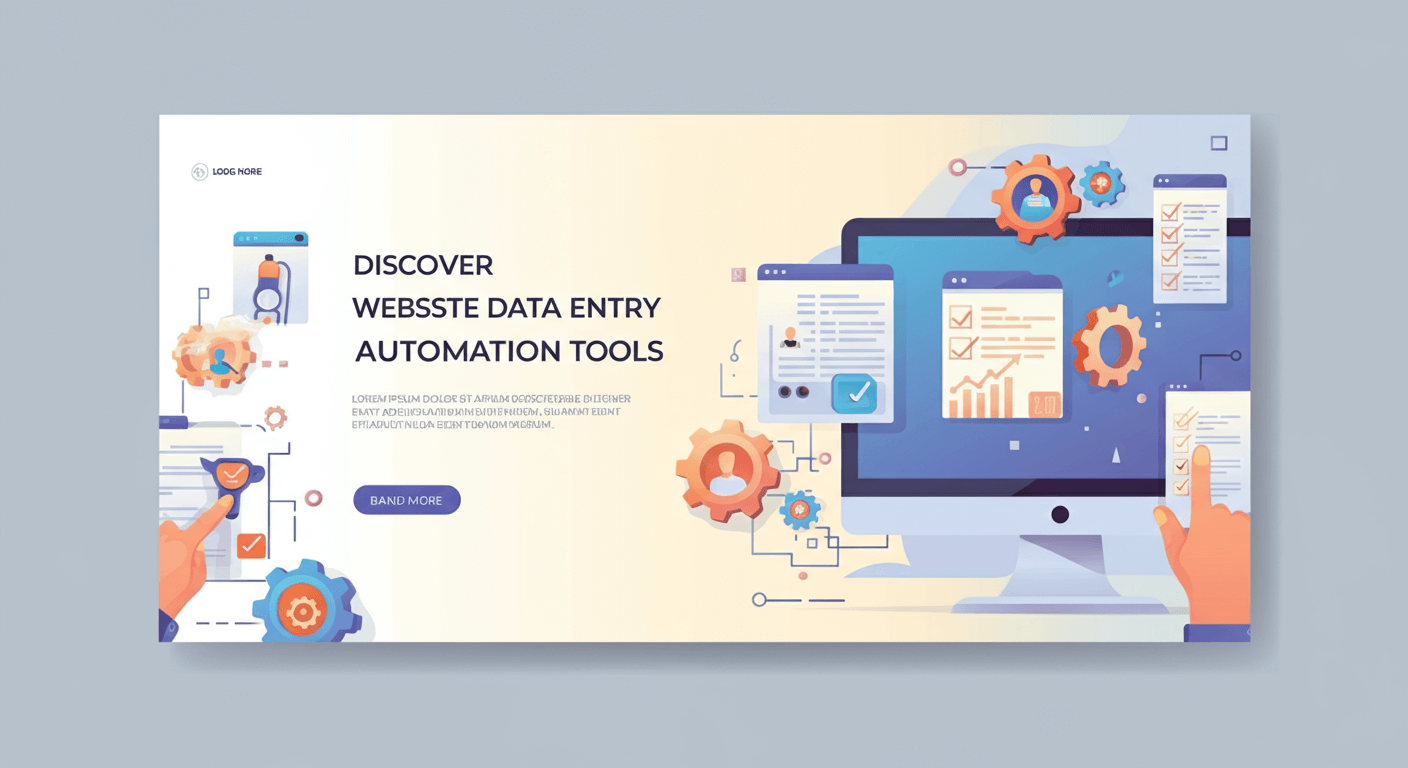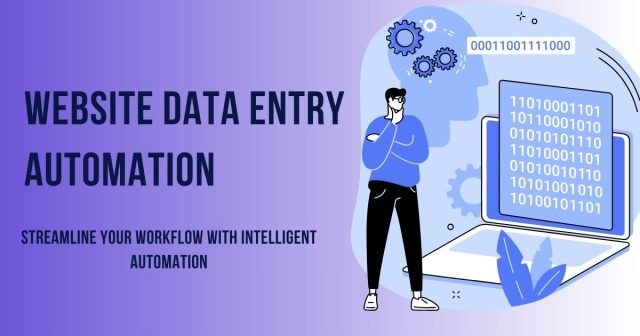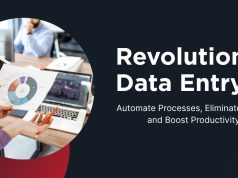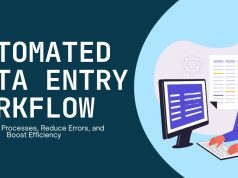Manual data entry consumes countless hours of productive time across businesses worldwide. Teams spend their days copying information from websites, transferring data between systems, and performing repetitive tasks that drain both energy and resources. Website data entry automation offers a powerful solution to this universal challenge.
This comprehensive guide explores how automated data entry can transform your business operations. You’ll discover practical strategies for implementing automation tools, learn about the most effective solutions available, and understand how to measure the impact on your workflow. By the end, you’ll have a clear roadmap for eliminating tedious manual processes and redirecting your team’s focus toward high-value activities.
The shift from manual to automated data entry represents more than just a technological upgrade—it’s a fundamental change in how businesses operate. Organizations that embrace these tools often see dramatic improvements in accuracy, speed, and employee satisfaction while reducing operational costs significantly.
Understanding Website Data Entry Automation
Website data entry automation refers to the use of software tools and technologies that automatically extract, process, and input data from websites without human intervention. These systems can navigate web pages, identify specific information, and transfer that data to databases, spreadsheets, or other applications seamlessly.
The technology operates through various methods including web scraping, robotic process automation (RPA), and application programming interfaces (APIs). Each approach offers unique advantages depending on your specific requirements and the complexity of the websites you’re working with.
Modern automation solutions have evolved far beyond simple copy-and-paste functions. They can handle dynamic content, interact with forms, manage login credentials, and even adapt to website changes automatically. This sophistication makes them suitable for everything from basic lead generation to complex e-commerce inventory management.
Key Benefits of Automating Data Entry Tasks

Enhanced Accuracy and Consistency
Human error is inevitable in manual data entry, especially during repetitive tasks. Automation eliminates typos, reduces transcription mistakes, and ensures consistent formatting across all entries. Once properly configured, automated systems maintain the same level of precision regardless of volume or complexity.
Significant Time Savings
Tasks that previously required hours or days can often be completed in minutes through automation. This acceleration allows teams to process larger datasets, respond to market changes more quickly, and allocate human resources to strategic initiatives rather than administrative work.
Cost Reduction
While automation tools require initial investment, they typically pay for themselves within months through reduced labor costs and increased productivity. The elimination of overtime hours and the ability to handle larger workloads without additional staff creates substantial long-term savings.
Improved Employee Satisfaction
Removing monotonous data entry tasks from employee responsibilities often leads to higher job satisfaction and reduced turnover. Team members can focus on creative problem-solving, customer relationships, and professional development instead of repetitive administrative work.
Scalability and Flexibility
Automated systems can easily scale up or down based on business needs without the challenges of hiring or training additional staff. They can work continuously, processing data outside normal business hours and handling peak periods without performance degradation.
Types of Website Data Entry Automation Tools

Web Scraping Software
Web scraping tools extract specific information from websites by parsing HTML code and identifying target elements. Popular options include Beautiful Soup for Python developers, Scrapy for complex projects, and user-friendly platforms like Octoparse for non-technical users. These tools excel at gathering large volumes of publicly available data from multiple sources.
Robotic Process Automation (RPA) Platforms
RPA solutions like UiPath, Blue Prism, and Automation Anywhere create software robots that mimic human interactions with websites and applications. They can click buttons, fill forms, navigate between pages, and transfer data across different systems while maintaining detailed audit trails.
Browser Extensions and Add-ons
Lightweight browser extensions offer quick automation solutions for simpler tasks. Tools like Web Scraper for Chrome or Firefox extensions can extract data from individual pages or perform basic form filling operations without requiring separate software installation.
Custom API Integrations
Many websites offer APIs that provide direct access to their data, eliminating the need for screen scraping. Custom integrations through APIs often provide more reliable and faster data access, though they require technical expertise to implement and maintain.
Implementation Strategies for Maximum Success

Assess Your Current Data Entry Processes
Begin by documenting existing manual processes, identifying bottlenecks, and calculating the time spent on various data entry tasks. This baseline measurement helps prioritize automation opportunities and demonstrates return on investment after implementation.
Create a comprehensive inventory of all data sources, target destinations, and transformation requirements. Understanding these relationships ensures that your automation solution addresses the complete workflow rather than just isolated components.
Start with Pilot Projects
Select straightforward, high-volume tasks for initial automation attempts. Success with simple projects builds confidence and expertise while providing immediate value. Common starting points include lead generation from directory websites, price monitoring for competitors, or inventory updates from supplier portals.
Document lessons learned during pilot implementations to refine your approach for more complex projects. This iterative process helps establish best practices and identifies potential challenges before they impact larger initiatives.
Develop Data Quality Standards
Establish clear criteria for data validation, formatting, and error handling before implementing automation. Automated systems require explicit rules for managing exceptions, handling missing information, and maintaining data integrity across all sources.
Create monitoring procedures to detect when websites change their structure or when automation processes encounter unexpected conditions. Regular quality checks ensure that automated data remains accurate and reliable over time.
Train Your Team
Invest in training programs that help team members understand and manage automation tools effectively. While the goal is to reduce manual work, human oversight remains crucial for maintaining quality and adapting to changing requirements.
Develop internal expertise rather than relying solely on external consultants. This approach provides better long-term control over your automation infrastructure and enables rapid response to changing business needs.
Overcoming Common Implementation Challenges
Website Structure Changes
Websites frequently update their design and structure, which can break existing automation scripts. Build flexibility into your automation processes by using robust element identification methods and implementing monitoring systems that alert you to potential issues.
Maintain backup strategies and alternative data sources when possible. This redundancy ensures business continuity even when primary automation processes require updates or modifications.
Legal and Ethical Considerations
Respect website terms of service and implement reasonable delays between requests to avoid overwhelming target servers. Consider the legal implications of data extraction, especially when dealing with copyrighted content or personal information.
Establish clear policies regarding data usage and storage to ensure compliance with privacy regulations and industry standards. This proactive approach prevents legal complications and maintains positive relationships with data sources.
Technical Complexity
Complex websites with dynamic content, JavaScript-heavy interfaces, or sophisticated security measures may require advanced automation techniques. Consider investing in professional development services for challenging implementations rather than struggling with inadequate solutions.
Balance technical sophistication with maintenance requirements. Sometimes simpler solutions that require minimal ongoing support provide better long-term value than complex systems that demand constant attention.
Measuring Automation Success
Time and Cost Metrics
Track the hours saved through automation and calculate the financial impact based on employee wage rates. Include both direct time savings and indirect benefits like reduced error correction and improved process reliability.
Monitor implementation and maintenance costs to ensure that automation continues providing positive return on investment over time. Regular cost-benefit analysis helps justify continued investment and guides expansion decisions.
Quality Improvements
Measure error rates before and after automation implementation to demonstrate accuracy improvements. Document specific examples of how automation has prevented costly mistakes or improved data consistency.
Track customer satisfaction metrics if automated data entry impacts external-facing processes. Improved accuracy and faster response times often translate into better customer experiences and increased business opportunities.
Strategic Impact
Evaluate how automation has enabled strategic initiatives that weren’t possible with manual processes. This might include entering new markets, launching additional product lines, or providing enhanced customer services.
Assess employee satisfaction and retention rates to understand the human impact of automation. Positive changes in job satisfaction often indicate successful implementation and sustainable long-term benefits.
The Future of Automated Data Entry
Artificial intelligence and machine learning capabilities are increasingly integrated into data entry automation tools. These advances enable systems to handle unstructured data, adapt to website changes automatically, and make intelligent decisions about data processing and validation.
Cloud-based automation platforms are making sophisticated tools accessible to smaller organizations while providing enterprise-level scalability and reliability. This democratization of automation technology levels the playing field across businesses of all sizes.
Integration capabilities continue expanding, allowing automation systems to connect with an ever-growing ecosystem of business applications and data sources. This connectivity creates opportunities for end-to-end process automation that extends far beyond simple data entry tasks.
Taking the Next Step Toward Automation
Website data entry automation represents a critical opportunity for businesses seeking competitive advantages through operational efficiency. The technology has matured beyond experimental novelty into proven solutions that deliver measurable results across industries and organization sizes.
Success requires careful planning, realistic expectations, and commitment to ongoing optimization. Start with clear objectives, choose appropriate tools for your specific needs, and build expertise gradually through hands-on experience with pilot projects.
The organizations that embrace automation today will be better positioned to handle future challenges while their competitors struggle with manual processes. The question isn’t whether to automate, but how quickly you can implement effective solutions that drive meaningful business improvements.
Begin by identifying your highest-impact automation opportunities and selecting the tools that best fit your technical capabilities and budget constraints. With proper implementation and ongoing refinement, website data entry automation will become an invaluable component of your operational strategy.
Automating data entry is a crucial step towards operational efficiency, but combining it with AI chatbot technology can significantly enhance your website’s responsiveness and customer engagement. Discover how integrating these tools can drive better results.










